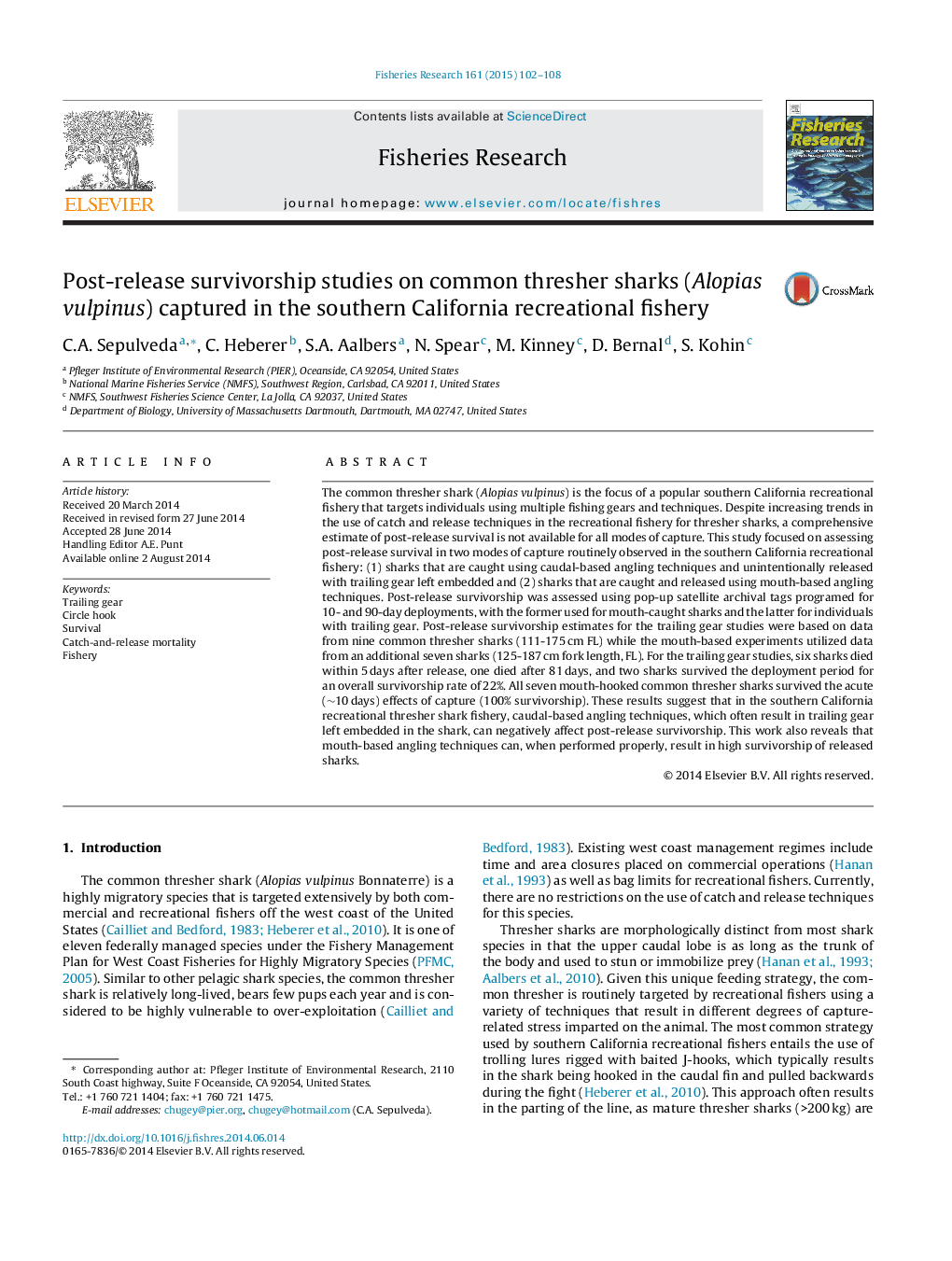| Article ID | Journal | Published Year | Pages | File Type |
|---|---|---|---|---|
| 6385781 | Fisheries Research | 2015 | 7 Pages |
â¢This study examined post-release disposition in the southern California recreational thresher shark fishery.â¢Relatively low survivorship (22%) was found for individuals captured and released with trailing gear.â¢High (100%) survivorship was found for sharks caught and released using mouth-based techniques.â¢Caudal-based angling techniques can negatively affect post-release survivorship.â¢Findings support the use of mouth-based techniques for catch and release fishing for common thresher sharks.
The common thresher shark (Alopias vulpinus) is the focus of a popular southern California recreational fishery that targets individuals using multiple fishing gears and techniques. Despite increasing trends in the use of catch and release techniques in the recreational fishery for thresher sharks, a comprehensive estimate of post-release survival is not available for all modes of capture. This study focused on assessing post-release survival in two modes of capture routinely observed in the southern California recreational fishery: (1) sharks that are caught using caudal-based angling techniques and unintentionally released with trailing gear left embedded and (2) sharks that are caught and released using mouth-based angling techniques. Post-release survivorship was assessed using pop-up satellite archival tags programed for 10- and 90-day deployments, with the former used for mouth-caught sharks and the latter for individuals with trailing gear. Post-release survivorship estimates for the trailing gear studies were based on data from nine common thresher sharks (111-175Â cm FL) while the mouth-based experiments utilized data from an additional seven sharks (125-187Â cm fork length, FL). For the trailing gear studies, six sharks died within 5Â days after release, one died after 81Â days, and two sharks survived the deployment period for an overall survivorship rate of 22%. All seven mouth-hooked common thresher sharks survived the acute (â¼10Â days) effects of capture (100% survivorship). These results suggest that in the southern California recreational thresher shark fishery, caudal-based angling techniques, which often result in trailing gear left embedded in the shark, can negatively affect post-release survivorship. This work also reveals that mouth-based angling techniques can, when performed properly, result in high survivorship of released sharks.
